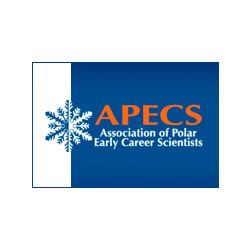APECS Scientific Animations
10.03.2011
During the International Polar Year 2009-2010, four young polar scientists from APECS (Association of Polar Early Career Scientists) set out to prove that it was possible for scientists to communicate research results & conclusions through self-made multimedia animations.
This initiative was supported by D. Carlson, Director of the IPY International Programme Office.
Six months after their initial meeting, each of them had created at least one short animation related to their specific research interests, and had developed reliable ways to share their products.
These animations were presented to an appreciative audience of teachers and scientists at the Oslo IPY Conference. Consistent with IPY free and open access policies, the International Polar Foundation contributed to the project by providing a permanent home to these animations and by making them available to teachers.
Animations
Using Lake Archives to Track Past Environmental Change
This animation illustrates how layers of plant, animal and mineral remains buried in lake bottoms can be used to trace past environments. Various audiences from high-school students to thesis defense listeners have enjoyed this simple presentation.
Maija Heikkilä - Freshwater Institute, Fisheries and Oceans Canada, 501 University Crescent, Winnipeg, MB R3T 2N6, Canada
Monitoring Permafrost from Space
The video explains how it is possible to detect permafrost dynamics by means of satellite images. The freezing and thawing of the frozen soil causes changes in topography which are detectable by high resolution RADAR sensors
Inga May - Department of Geography, Ludwig-Maximilians University Munich, 80333 Munich, Germany
The flow of energy trough the High Arctic trophic chain: Why is Arctic cod a keystone species?
This animation highlights the importance of a small fish in the Arctic ecosystem. It targets high school students as they are aware of climate changes and easily understand simple ecological concepts. The objective is to generate discussions about the effects of global warming on the Arctic food web.
Maxime Geoffroy - Québec-Océan, Département de biologie, Université Laval, Québec, QC, G1V 0A6 Canada
Why are phytoplankton crucial in a changing climate?
This animation reveals the primordial role of phytoplankton in marine ecosystems. A multitude of forms, size and colours characterizes these microorganisms present from tropical to polar oceans. You will understand why phytoplankton are particularly sensitive to fundamental environmental changes, particularly in the Arctic Ocean.
Mathieu Ardyna - Institut des sciences de la mer de Rimouski, Université du Québec à Rimouski, 310 Allée des Ursulines, Rimouski, QC G5L 3A1, Canada








